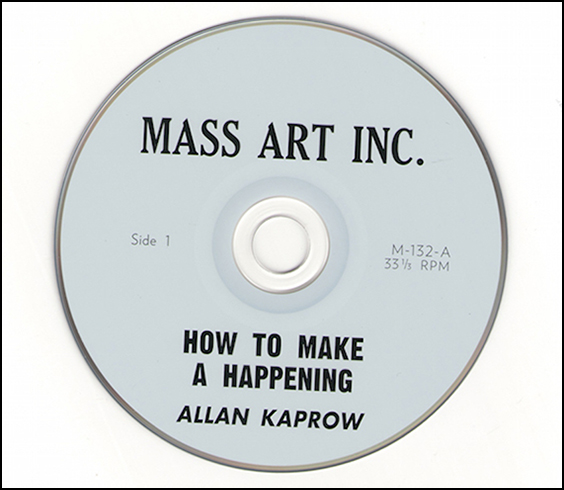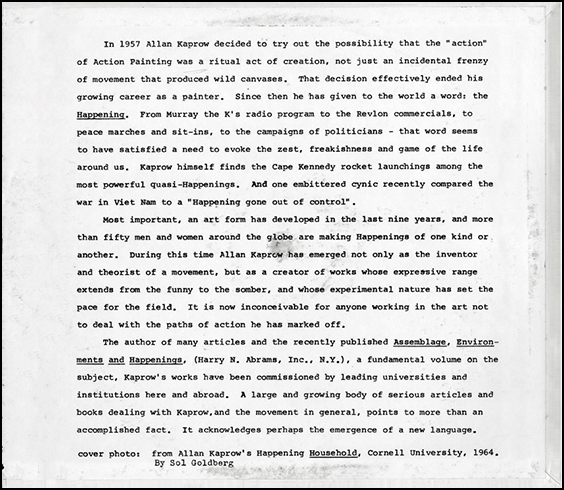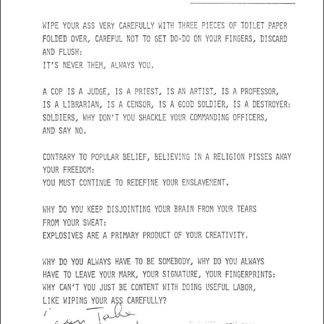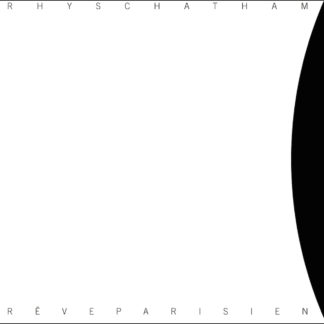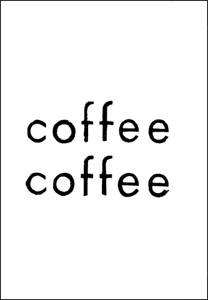Description
Forget all the standard art forms—don’t paint pictures, don’t make poetry, don’t build architecture, don’t arrange dances, don’t write plays, don’t compose music, don’t make movies, and above all don’t think you’ll get a happening by putting all these together.
View images from our launch at Maccarone, How to Make A Happening for 100 radios, here
The point is to make something new, something that doesn’t even remotely remind you of culture.
Primary Information is pleased to announce the CD release of Allan Kaprow’s How to Make a Happening LP—making it available on a wide scale basis for the first time in the title’s history. Originally released by Mass Art in 1966, the record never saw thorough distribution as the publisher went bankrupt shortly after its release. Later, in 1968, How to Make a Happening was distributed on a limited basis through Something Else Press—A laminated and silk-screened cover by Alison Knowles distinguished this edition from its predecessor.
The CD will be released on September 2nd and available through international music and artists’ books distributors as well as on Primary Information’s website for $18.00. On October 11, Primary Information and the Estate of Allan Kaprow will celebrate the release with a one-night event at Maccarone Gallery in New York City. Titled How to Make a Happening for 100 Radios, the event (as the title implies) will feature the piece played out by 100 FM radios endlessly throughout the evening.
Simple in construction, yet profound in context, How to Make a Happening is Allan Kaprow delivering 11 rules on how, and how not, to make a Happening, an movement begun by Kaprow in the late fifties that is known for its unpredictability, open scores, and constantly-evolving form.
On the first track, Kaprow speaks plainly into a microphone, delivering a private cut-to-the-chase style instruction on Happenings that is both informative and contradictory. Kaprow, known as a great teacher of the avant-garde (from Rutgers to Cal Arts to finally University of California, San Diego), delivers both a practical and theoretical how-to with an oftentimes dead-pan humor.
On the second track, which is constructed like the first, Kaprow reads the program and notes of three recent Happenings (Soap, Calling, and Raining), which serve as loose instruction, as they involve improvisation and forces beyond human control, such as acts of nature and other uncontrolled environmental forces. These elucidations further provide a clear, if somewhat circumstantial, distinction of what does and does not constitute a Happening.
Perhaps, one of the more astonishing values to this recording is that it reflects and informs on a movement that fifty years on has come be seen as a seminal shift in postwar contemporary art and performance, yet is discussed by its founder without this hindsight—it lacks sentimentality and most of all it lacks a sense of its relevance within this history. In fact, Kaprow shrugs off its place in the arts—its rejections of their strategies become a starting point if not a hallmark of the Happening, as he claims in rule number one:
Forget all the standard art forms—don’t paint pictures, don’t make poetry, don’t build architecture, don’t arrange dances, don’t write plays, don’t compose music, don’t make movies, and above all don’t think you’ll get a happening by putting all these together.
How to Make a Happeningis being re-issued with the cooperation of the Estate of Allan Kaprow and the Getty Research Institute. Each CD is packaged in a hand-silkscreened jewel case that replicates the laminated edition by Alison Knowles and Something Else Press while preserving the original artwork carried out by Mass Art.
CD
5 x 5.5 inches
24:43 minutes
Edition of 1000
September 2008
Allan Kaprow: A Short Biography
Allan Kaprow was born in Atlantic City, New Jersey, in 1927. Much of his childhood was spent in Tucson, Arizona, but he returned to New York City to graduate from the High School of Music and Art in 1945. In 1949 he received his BA from New York University, and for the next year worked toward a graduate degree in philosophy. In 1947-48, he also studied painting with Hans Hofmann. He shifted to the study of art history at Columbia University and received his Master’s degree in 1952 under Meyer Schapiro. Later, in 1957–58, he studied music composition with John Cage at the New School for Social Research.
In 1952 he was a co-founder of the historic Hansa Gallery in New York and he exhibited regularly throughout the 1950s. Since then, Kaprow’s work has been shown extensively throughout the United States and Europe. He has had more than 30 one-person exhibitions, including retrospectives, at the Pasadena Art Museum, Pasadena, California, 1967; Kunsthalle Bremen, Bremen, Germany, 1976; Museum am Ostwall, Dortmund, Germany, 1986; University of Texas in Arlington, TX, 1988; Fondazione Mudima, Milan, Italy, 1991; Galerie Donguy, Paris, France, 1992; John Gibson Gallery, New York, 1995; and Galerie Hauser & Wirth, Zürich, 2005.
By 1957, Kaprow’s work became exclusively environmental, involving lights, electronic sounds, odors, and other unusual materials. In 1958, Kaprow exhibited his first “arrangements” at Hansa Gallery. Containing no art objects as such: the art was experienced as a surrounding rather than a picture or sculpture to be looked at—a surrounding which engaged the visitor with things to move, switches to manipulate, obstacles to climb, and food to eat. For the next seven years, he expanded the potential of the “Environment,” as it came to be called.
Gradually the showcase space was abandoned for more informal and natural settings such as vacant breweries, open fields, beaches and woods. Invitations for Kaprow, and commissions for such works, came from universities in the United States and from art institutions abroad. In the same period of 1957–58, Kaprow developed the “happening” as an extension of the environmental concept; contributing an unexpected concept and household word to our spoken language, in the process; and an art form, Happenings, that in various ways and under different names has been practiced all over the world.
In Kaprow’s form of Happening, ordinary people, ordinary time and everyday spaces like streets, houses and shops, were frequently merged into ordinary activities such as wallpapering a room, digging ditches or taking a pulse. Fantasy was never absent, but there was always a commitment to shared or common experience. Art and life were blurred. By 1969, Kaprow’s work had evolved so distinctly into a new phase that he gave up the designation “Happening” and adopted colleague Michael Kirby’s term “Activity.”
Between 1958 and his death in 2006. Allan Kaprow executed nearly 250 such events. His work has been sponsored by major institutions around the world: the Museum of Modern Art in New York; the Museum of Contemporary Art in Chicago; the Walker Art Center in Minneapolis, Minnesota; the Pasadena Art Museum in California; Cornell University in Ithaca, New York; University of Michigan, Ann Arbor; University of California at Berkeley; Massachusetts Institute of Technology in Cambridge; Musée National d’Art Moderne, Centre Georges Pompidou in Paris, France; Akademie der Künste in Berlin, Germany; Galeria Foksal in Warsaw, Poland; Comune di Milano Ripartizione iniziative culturali, Milan, Italy; Museum des 20. Jahrhunderts (MUMOK) in Vienna, Austria; Biennials in Lyon, France; Leipzig, Germany, and Venice, Italy; and documenta in Kassel, Germany.
At the time of his death in April 2006, Allan Kaprow was working with curators on “Art as Life,” a creative and innovative presentation of his oeuvre. The resulting exhibition traveled throughout Europe and its final venue was the Geffen Contemporary at MOCA, Los Angeles, where it closed on June 30, 2008.

